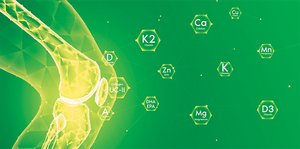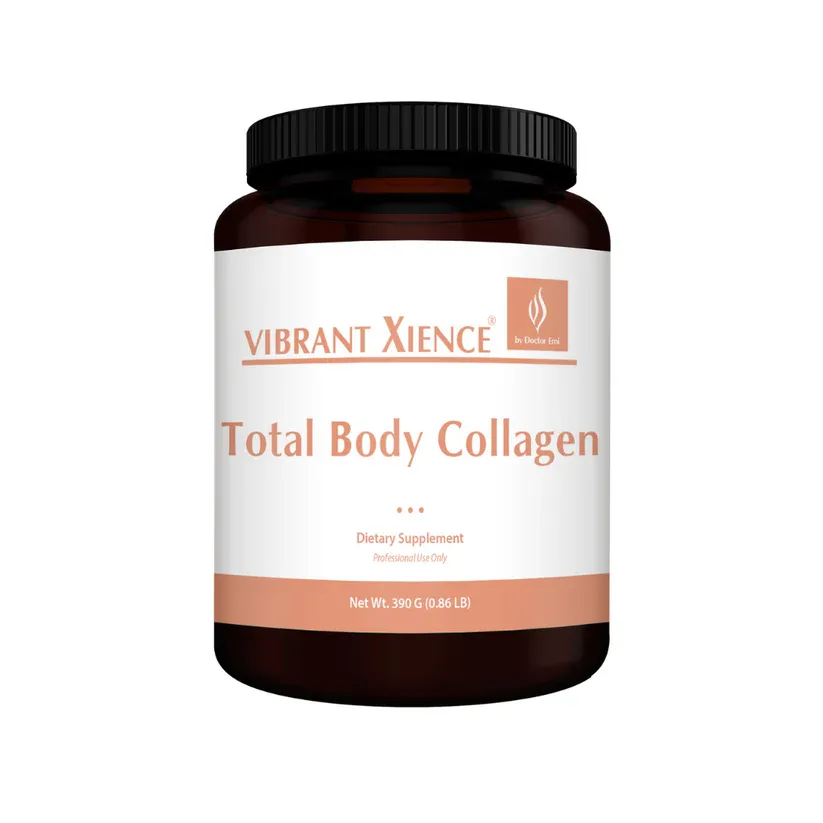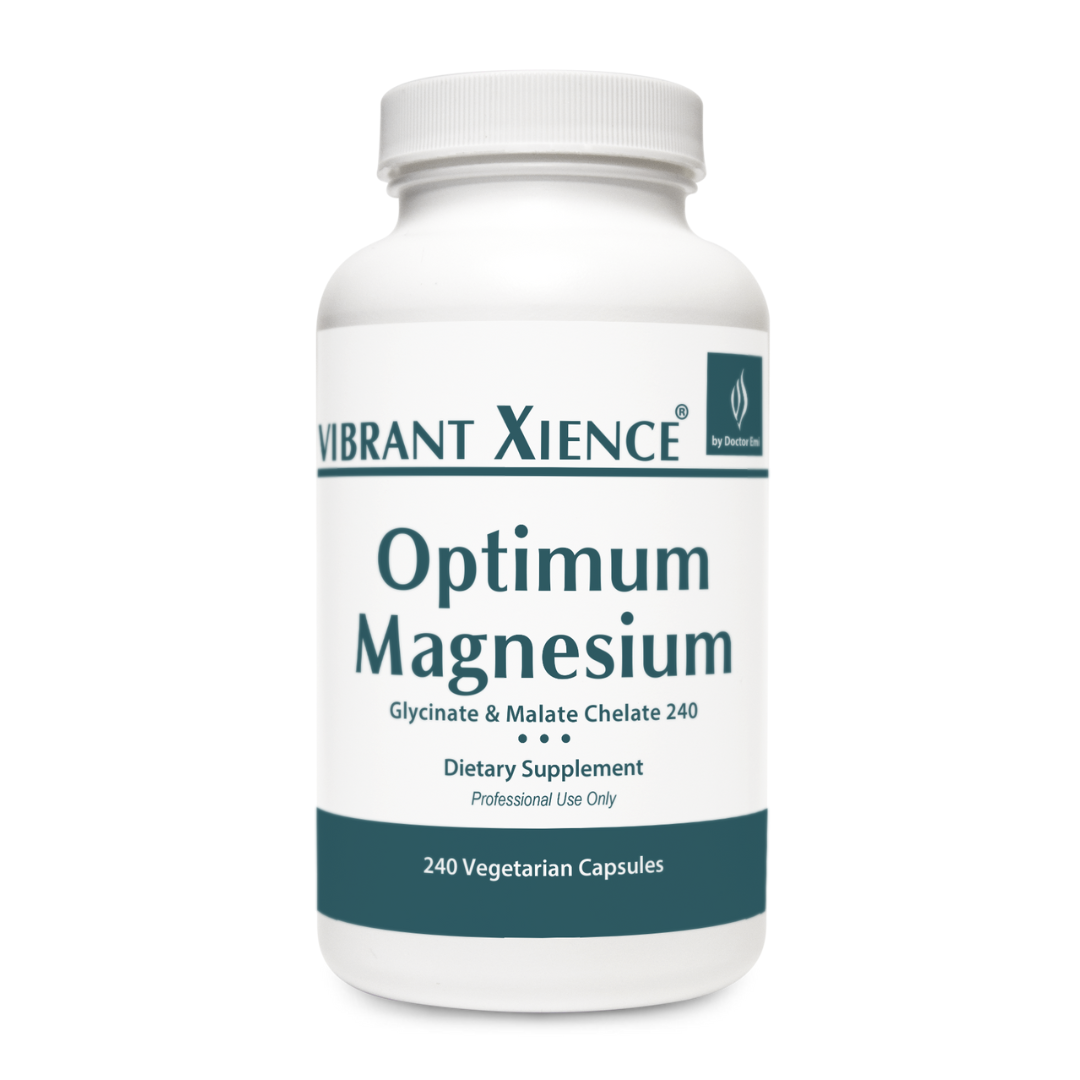You or a Loved One Has Been Diagnosed with Low Bone Density. Now What?
The first thing people think when they hear “low bone density,” is “osteoporosis.” However, low bone density is actually a condition called osteopenia (low bone mass), which can develop into osteoporosis if bone loss continues.1
What you can do right now:
- Educate yourself
- Learn how to stop the loss of bone mass
- Learn how to build bone density
What is Osteoporosis?
Osteoporosis literally means “porous bones.” Osteoporosis is a disease wherein the bones become fragile from losing their bone density resulting in decreased bone strength. The bones gradually break down, become more porous and thus more brittle. Osteoporosis puts people at a high risk for bone fractures from falls, or even from merely bumping into something. About 25% of men2 and a whopping 50% of women3 over age 50 are/will be at risk of incurring a fracture related to osteoporosis in his/her lifetime. In fact, there are 8.9 million osteoporosis-related fractures worldwide every year.4 Osteoporosis is often called “the silent disease,” because many people don’t realize they have it until they actually experience a fracture.5
Osteoporosis has a lot to do with inflammation,6 free radical damage,7 and hormonal changes.8 Your peak bone mass is at age 30. However, many women don’t pay attention to their diet before or at age 30, and often eat inflammation-causing foods, and foods with preservatives. Stress also plays a role.9
About The Bone Matrix: What Makes Up a Bone?
There are two main kinds of cells in the bone:
1. Osteoblasts, cells that build up bone
2. Osteoclasts, cells that break down (resorb) bone
Because the bones are actually living tissue, there is a constant building up and breaking down process going on, which is referred to as “remodeling.”10 The balance between these two activities is extremely important in determining bone density. Which activity dominates (building up vs. breaking down), depends upon the the environment (the milieu) inside the bone matrix.11,12
So, the question is: how healthy is your bone matrix? There are multiple factors to consider in bone matrix health which include (but are not limited to):
- hormone balance
- inflammation in the bone matrix (an often overlooked factor)13
- availability of nutrients necessary to build the bone matrix
The more inflammation present in the body, and thus in the bones, the more bone break-down (osteoclast activity) is encouraged. Conversely, the less inflammation (inflammatory modulators or signaling factors) present in the body, the more bone-building activity (osteoblast activity) can take place.
This ties in with our post on free radicals and explains why one factor: age (time over which free radical damage and inflammation accumulate) is a big determinant in bone break-down (osteoclast activity).
The structure of bone is also important to understand. Mature bone contains both proteins and minerals. The bone has a “matrix” or scaffolding upon which the minerals are laid to make bone. The scaffolding or Matrix made mostly of collagen which accounts of 90% of the material in the Matrix. Collagen a strong and flexible protein and is also a key component in cartilage, skin and tendons. It gives bone its “toughness”- its ability to withstand impact. The higher the collagen content of the bone, the less brittle and more resilient it is. Collagen is lost as we age. The matrix of the bone is then overlayed with a mix of minerals–mainly calcium and phosphate. The minerals are responsible for the strength and stiffness of the bone.14
Some Misconceptions About Bone Health
Calcium is an important component of bone health. Over the years, it has been hammered into people that they need a lot of calcium from dairy sources to build bone density.15 Getting calcium from dairy sources is okay for some people, but there are many people who cannot tolerate dairy products for various reasons. Dairy is actually not the most absorbable form of calcium. It turns out that while dairy is high in calcium, only 30% of the calcium in dairy is actually absorbed – so of the 300 mg of calcium in a glass of milk, only 90 mg or so is absorbed. By contrast, with green leafy vegetables, more than 50% of the calcium contained in them is absorbable, making the calcium in a 2 cups of broccoli or 1 and 1/2 cups of kale equal to that of a glass of milk. There is also evidence that with a more plant-based diet with less sodium and animal source protein, less calcium is wasted in the urine and therefore the daily need for calcium reduces.16,17,18,19,20,21
There have been some studies which suggest that too much calcium (in and of itself) can actually be harmful to the body. In the course of one trial (which was designed to look at bone mineral density) it was found that super physiologic doses of supplemental calcium citrate (1,000 mg per day was used in the study) could lead to atherosclerosis (hardening of the arteries), which can lead to heart attack and stroke.22,23
These findings however did not reach statistical significance and are considered controversial and inconclusive.
Whether calcium plays a role in kidney stones is controversial as most evidence seems to point to the calcium in kidney stones being not from what you ingest, but from what you break down in your bones. There is also Calcium Pyrophosphate Disease – a disease that mimics gout and involves deposits of calcium pyrophosphate crystals in joints. There is evidence for a causal relationship between the structure, size, and load of calcium pyrophosphate dihydrate crystals, and attacks of pseudogout.24
There is some evidence that Vitamin K2 may decrease the risk of the complications which can occur from taking calcium alone. Vitamin K2 is a co-factor which, when taken along with Vitamin D, directs the deposition of calcium to the correct places (think of this as a traffic cop directing where calcium goes in the body).25
Note: Vitamin K2 is not to be confused with Vitamin K1, which is involved with blood clotting.
The reality of the matter is that calcium cannot work properly without a balance of certain other vitamins and minerals to aid the bones in their constant rebuilding (remodeling) process. There are studies showing calcium taken alone without vitamin K2 can lead to deposition of calcium in undesired places in the body such as blood vessels and joints. The the addition of vitamin K2 can be important in the prevention of coronary artery disease.26
Vitamins and Minerals Necessary for Bone Health
Vitamin K2
Vitamin K2 is extremely necessary as it helps the calcium stay in the bones (where it belongs) and OUT of the arteries and joints (where it does not belong). Vitamin K2 may also stimulate bone mineralization, and reduce osteoporotic disease activity.27 Again, please note: vitamin K2 is not to be confused with vitamin K1, which is involved with blood clotting.
Some foods rich in vitamin K2 include:
- liver
- meat
- egg yolks
- high-fat dairy
- natto28
Vitamin D3
You must have Vitamin D3 in order for your body to be able to absorb calcium. An estimated one billion people worldwide (in all ethnicities and age groups) are Vitamin D deficient, and particularly people in the northern hemisphere.29
Vitamin D is a fat-soluble vitamin that has an important role in maintaining the proper level of calcium and phosphorus necessary for bone mineralization. Vitamin D is actually a group of sterols that make up two types of vitamin D: Vitamin D2 (from plant sources which is poorly absorbed) and Vitmain D3 from animal sources and sunlight (both of which are well-absorbed). A type of cholesterol called 7-dehydrocholoesterol is a precursor to vitamin D which is necessary to convert the various sources of vitamin D3 first into previtamin D3, and finally into usable vitamin D3. Interestingly, you will notice the foods high in vitamin D are also high in cholesterol. 30,31,32
Sources of Vitamin D3:
- fatty fish (salmon, mackerel, sardines, herring)
- sunlight
Vitamin D3 from sunlight or food cannot be made by the body unless certain biochemical reactions in the blood, liver and kidneys take place. If there is any break in the chain of vitamin D production caused by the lack of the right kind of cholesterol, sunlight, vitamin D-rich foods; or if liver disease or kidney disease are present, a vitamin D deficiency can result.
Magnesium and Zinc
Two other minerals essential for healthy bones are: magnesium33,34 and zinc.35 Magnesium and zinc work together with vitamin K2, vitamin D3, and calcium to build healthy bones.
Some foods rich in magnesium include:
- dark green vegetables
- legumes
- fish
- nuts
Some foods rich in zinc include:
- oysters
- crab
- beef
- chicken
- yogurt
- cashews
Calcium
Some non-dairy foods rich in calcium:
- leafy greens
- collard greens
- broccoli
- kale
- bok choy
- okra
- oranges
- sardines
What You Can Do for Your Bone Health
- Eat a healthy, balanced diet; make sure to include a lot of green, leafy vegetables
- Exercise – especially weight bearing exercises as they help support healthy bone density
- 15-20 minutes of sunshine a day (when and if possible)
- Consider vitamin-mineral dietary supplementation
Vitamin-Mineral Dietary Supplementation for Bone Health
Collagen is a vital part of the bone matrix. One dietary element, silicon, is important in the synthesis of collagen. Enzymes in the body, which need silicon to function, link together single chains of amino acids (the building blocks of proteins) to make collagen fibers. Collagen fibers lay down the structure of the bone to which calcium and other minerals bind to make the bone matrix (see above for the structure of bone).
Numerous studies have shown that an increase in the intake of the dietary element, silicon, can increase bone mineral density.36 One study showed the addition of 100 mg of silicon to the diet for 4 months in post menopausal women increased bone mineral density in the femoral neck (the most fragile part of bone) by more than 4%. Adding silicon to a patient’s supplementation did better at building bone density in this head-to-head trial than adding flouride as a supplement did. Patients who were given the silicon also had better bone density than those in the trial given the drug etidronate. Etidronate is an IV medication in the bisphosphonate class of drugs similar to Boniva which is used for osteoporosis.37
The problem is that it is difficult to absorb silicon in significant amounts either through diet or through most supplements to make a difference. The exception is choline-stabilised orthosilicic acid, which has human studies showing it absorbs very well. This compound not only helps with the collagen matrix for healthy bones but also aids in the making of collagen for hair, skin, and nails.
Our Total Body Collagen contains 3 separate supplements. Each one works on a different aspect of bone health, and they work together synergistically for best results:
- Choline-stabilised orthosilicic acid, an absorbable form of silicon with extensive clinical testing, which helps build collagen (1 capsule)
- Vitamin K2 with D3 (1 capsule with 1000 IU of Vitamin D3 and 40 mcg of K2) — Read more about Vitamin K2 with D3: Vitamin K2 with D3: a Synergistic Duo in Bone Health)
- Microcrystalline hydroxyapatite concentrate (known as MCHC) in each packet (2 capsules) – MCHC is a source of calcium but provides much more for bone health than just calcium. It contains a standardized and safe, bovine-sourced bone extract from New Zealand. It naturally contains a crystalline calcium and phosphorus matrix in the ideal physiological ratio of 2:1. It also contains bioactive growth factors and type I collagen. A broad range of essential trace elements are also present. Unlike some elemental calcium available on the market, MCHC does NOT have lead contamination.
For the absolute best in bone support, we suggest combining:
- 1 packet of Total Body Collagen to be taken daily with
- 1 capsule of Optimum Magnesium Glycinate & Malate Chelate to maintain healthy calcium and Magnesium balance.
To reduce inflammation and bone break-down, we recommend our Curcumin Rapid Absorb ( For more information read The Wonders of Curcumin and Why You Should Consider Taking It). As discussed above, the activity of osteoclasts (which break down bone) is enhanced by generalized inflammation; conversely, their activity is decreased in an anti inflammatory environment. Although there are no human studies, animal studies do point to the protective effects of curcumin in a 94% extract or better (ours is a 95% extract of curcuminoids) having a protective effect.38,39,40
Please consult your physician before beginning this, or any dietary supplementation.
The Doctor Emi Team



